AMD Pensando DSC2-100G Hardware Overview
The cards in our Dell PowerEdge R7615 servers are full height AMD Pensando DSC2-100G. We are not exactly sure about the Pensando naming, but the original 25GbE cards were DSC-25G. The new card seems to be DSC2 (Pensando used to call these Distributed Service Cards or something similar) with 2 for 2nd generation Elba architecture.
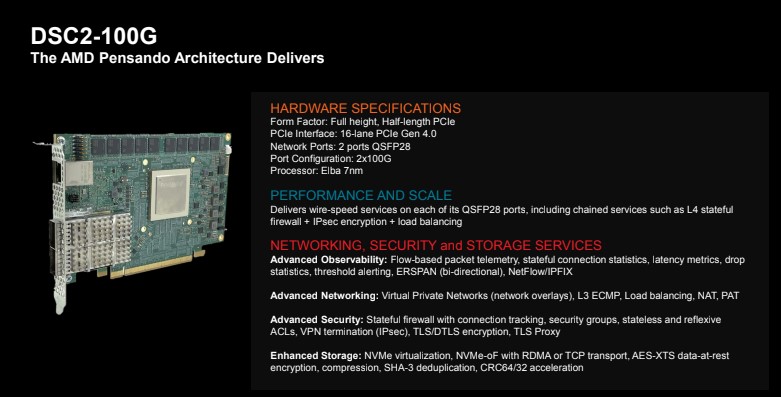
The cards have a PCIe Gen4 x16 interface on one side and two QSFP28 100GbE ports on the other side.
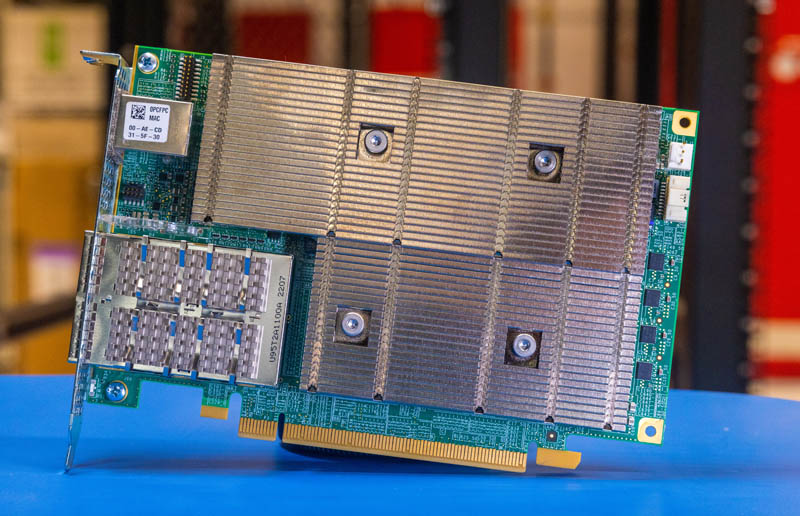
The heatsink is significant, and because this is STH, we also have a version without the heatsink so you can see the memory atop the SoC.
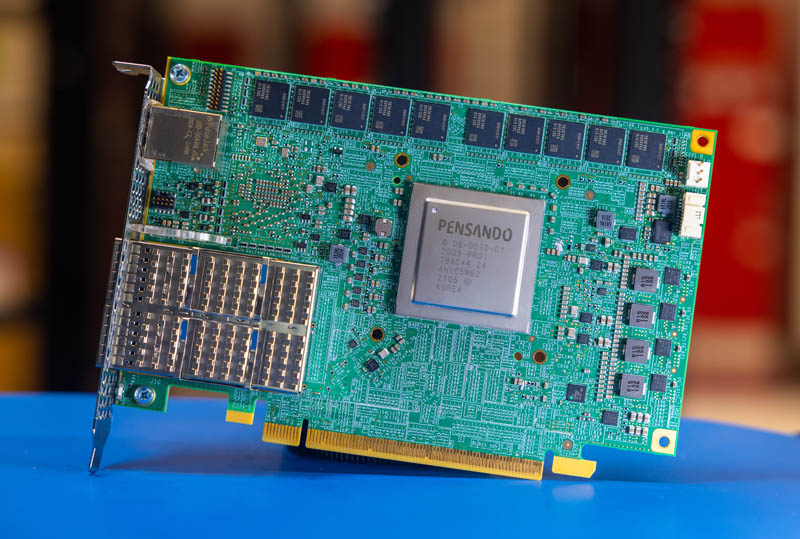
On the back side of the card, we get additional memory, an AMD Xilinx Artix 7, and then the NAND storage.
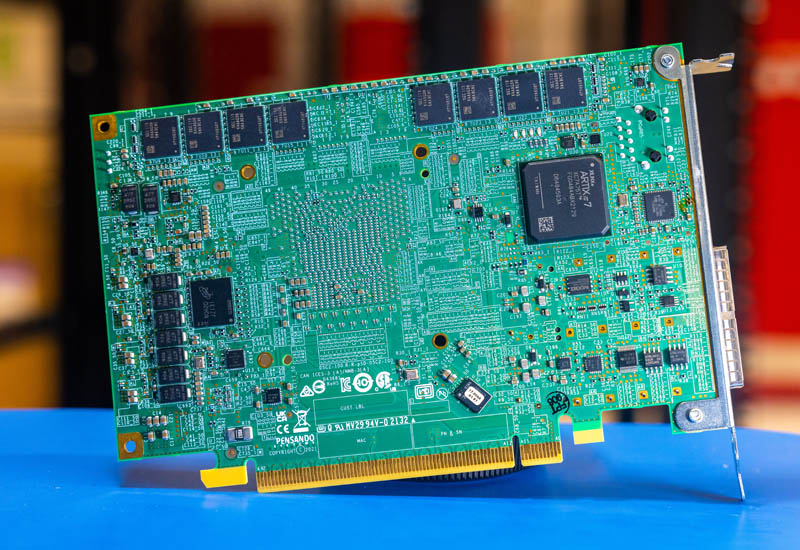
While on the BlueField-2 DPU we reviewed previously there was an ASPEED AST2500 BMC powering the out-of-band management port, we have an out-of-band management port here, but without the BMC.
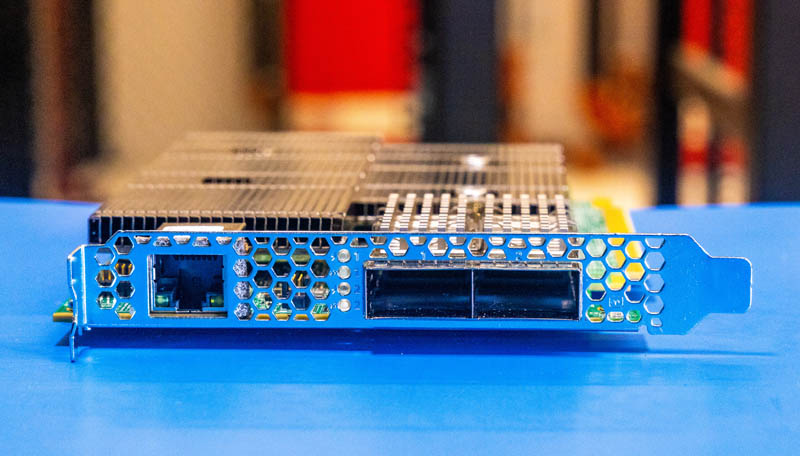
Here is a view of the two 100GbE QSFP28 cages without the heatsink. One can see there are fairly substantial heatsinks on the cages, but nowhere near what we are seeing in the 400GbE generations.
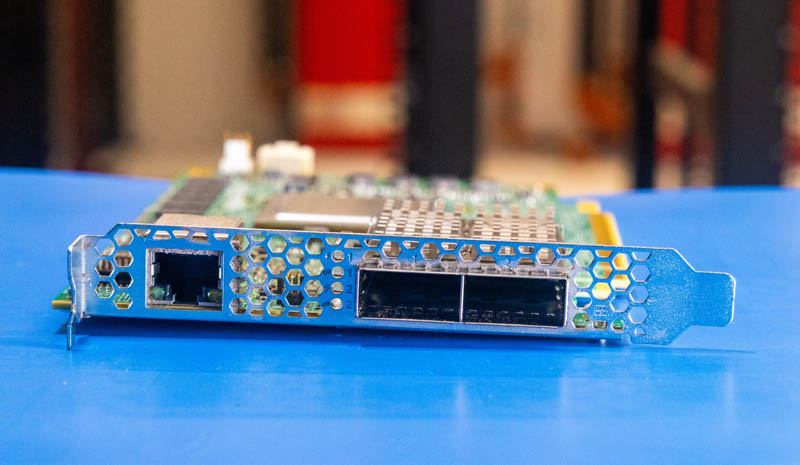
Here is the opposite side of the NIC where airflow enters the heatsink in the PowerEdge R7615 test servers.
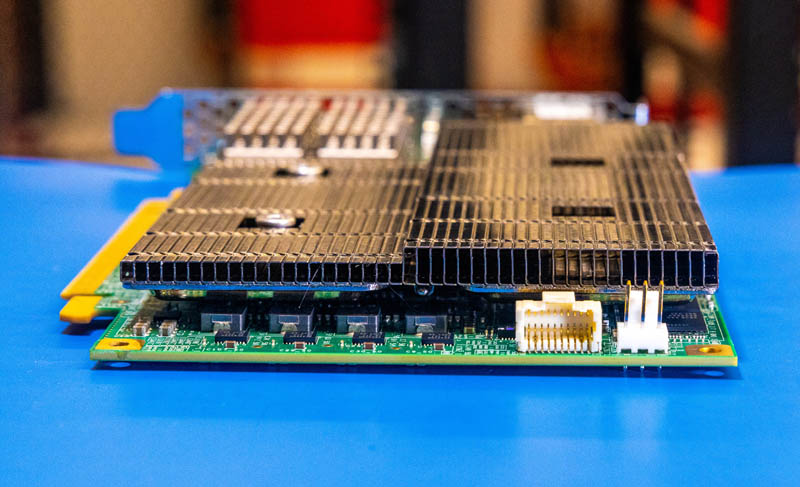
That white connector is for the management cable. We can see it easily in this edge shot.
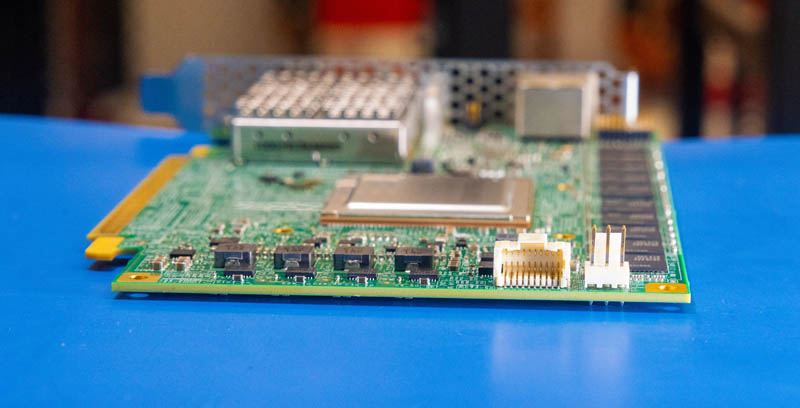
We can also see just how large the 7nm Elba DPU chip is behind it.
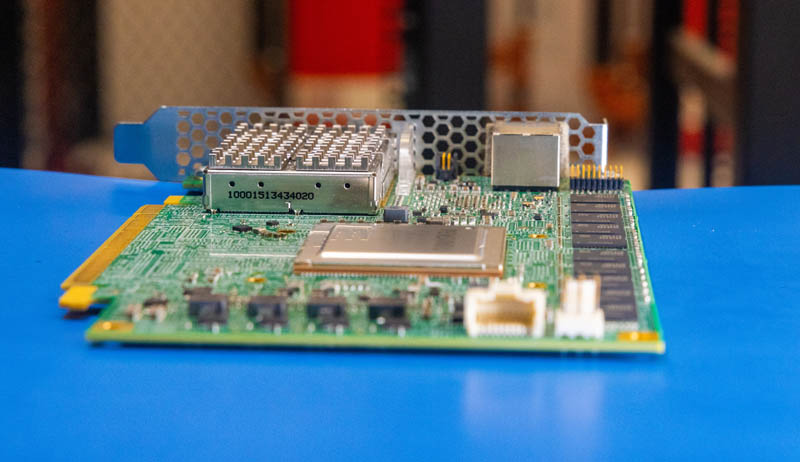
Here is the PCIe Gen4 x16 connector side.
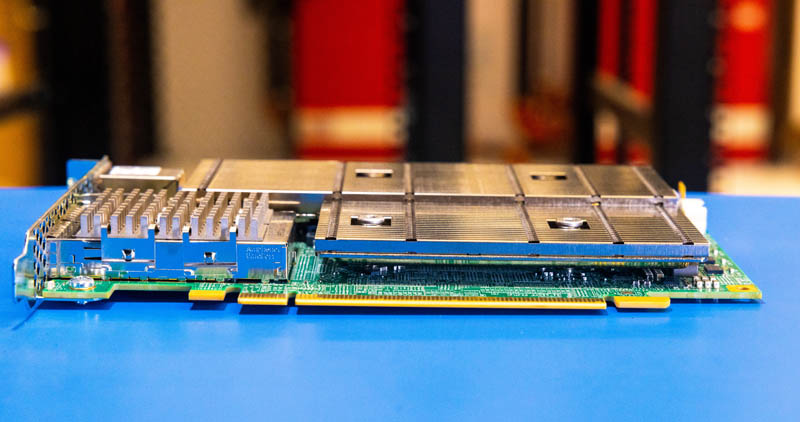
Our Canon lens being used to prop up cards also allowed us to get this view between the heatsink and the card.
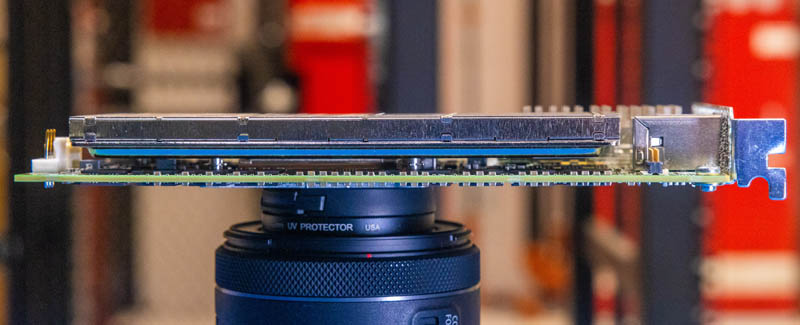
That is the DSC2-100G option, but there is also a 25GbE option.




STH is the SpaceX of DPU coverage. Everyone else is Boeing on their best day.
Killer hands on! We’ll look at those for sure.
This is unparalleled work in the DC industry. We’re so lucky STH is doing DPUs otherwise nobody would know what they are. Vendor marketing says they’re pixie dust. Talking heads online clearly have never used them and are imbued with the marketing pixie dust for a few paragraphs. Then there’s this style of taking the solution apart and probing.
It’ll be interesting to see if AMD indeed also ships more Xilinx FPGA smartnic or no?
They released their Nanotubes ebpf->fpga compiler pretty recently to help exactly this. And with fpga being embedded in more chips, it’d be an obvious path forward. Somewhat expecting to see it make an appearance in tomorrow’s MI300 release.
You had me at they’ve got 100Gb and nVidia’s at 25Gb
Does this work with Open Source virtualization as well?
Why does it say QSFP56? That’d be a 200G card, or 100G on only 2 lanes.
@Nils there’s no cards out in the wild and no open source virtualization project that currently has support built in for P4 or similar. It’s a matter of time until either or both become available but until then it’s all proprietary.
I also don’t expect hyperscalers to open up their in-house stuff like AWS’ Nitro or Googles’ FPGA accelerated KVM